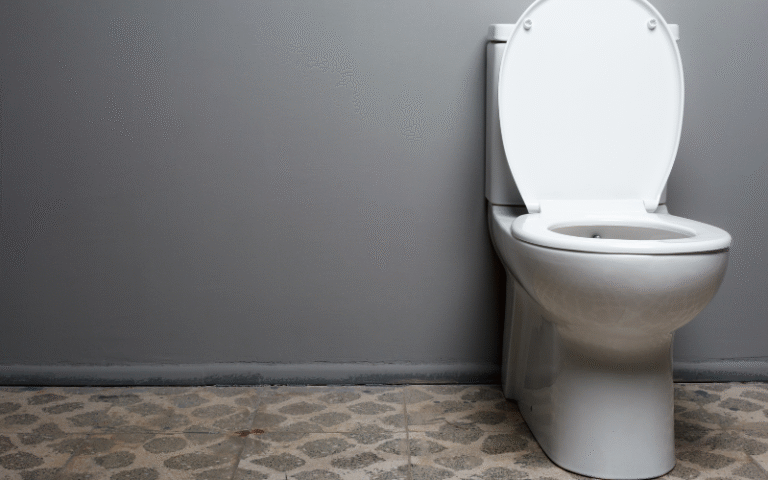How to Measure Pipe Size: A Complete DIY Guide
To measure pipe size, use a measuring tape or caliper to determine the outside diameter. Compare to a pipe size chart for accurate identification.
Understanding the size of a pipe is crucial for various applications, such as plumbing, construction, or repair projects. By accurately measuring the pipe size, you can ensure proper fittings, connections, and compatibility with other components. Whether you are replacing a section of piping or installing new fixtures, knowing the pipe size is essential for a successful project outcome.
Let’s explore the simple yet vital process of measuring pipe size to assist you in your next plumbing or construction endeavor.
Introduction To Pipe Measurement
Pipe measurement is an essential aspect of determining pipe size accurately. By following specific steps and using measuring tools, you can ensure accurate pipe size measurements, facilitating seamless installation and maintenance processes.
Importance Of Accurate Pipe Sizing
Accurate pipe sizing is crucial in various industries, including plumbing, construction, and manufacturing. Choosing the right pipe size ensures efficient flow of liquids or gases, preventing unnecessary pressure drops or leaks. Incorrectly sized pipes can lead to costly repairs, reduced system performance, and even safety hazards. Therefore, it is essential to understand the importance of accurate pipe sizing and how it can impact the overall functionality of a system.
Common Misconceptions In Pipe Measurement
Despite the significance of accurate pipe sizing, there are several common misconceptions that can arise during the measurement process. These misconceptions can lead to errors and inconsistencies, ultimately affecting the performance of the system. By addressing these misconceptions, we can ensure accurate pipe measurement and avoid potential problems in the long run.
One common misconception is that pipe size corresponds directly to the outer diameter of the pipe. While the outer diameter is one factor to consider, it is not the sole determinant of pipe size. Pipe size is also influenced by the internal diameter, wall thickness, and material of the pipe. Therefore, relying solely on the outer diameter can lead to inaccurate measurements and improper pipe selection.
Another misconception is assuming that pipe size is universal across different countries or regions. In reality, pipe sizes can vary depending on the standards and regulations followed in each location. For example, the United States predominantly uses the NPS (Nominal Pipe Size) system, while other countries may follow different sizing conventions. It is crucial to be aware of these variations to ensure compatibility and proper installation.
Furthermore, some individuals mistakenly believe that pipe size corresponds directly to the volume or flow rate of a system. While pipe size does impact flow characteristics, other factors such as pressure, fluid properties, and pipe layout also play a significant role in determining the flow rate. Failing to consider these factors can lead to inadequate flow capacity and inefficient system performance.
To overcome these misconceptions, it is important to rely on accurate measurement techniques and consult relevant industry standards. By understanding the complexities of pipe sizing and addressing common misconceptions, we can ensure optimal performance and reliability in various piping systems.

Credit: www.wikihow.com
Tools Required For Measuring Pipes
When it comes to measuring pipe size, having the right tools is crucial to ensure accuracy. There are several tools required for measuring pipes, each serving a specific purpose. Let’s take a look at the essential tools you’ll need to measure pipe size accurately.
Tape Measure And Rulers
A tape measure is a fundamental tool for measuring pipe size. It allows you to quickly and easily determine the length and diameter of the pipe. For more precise measurements, a sturdy ruler can also be used to measure the diameter and length of the pipe.
Calipers For Precision
Calipers are essential for achieving precise measurements of pipe size. These tools enable you to measure the outer diameter of the pipe accurately, ensuring that you get the most accurate dimensions for your pipe.
Using A Pipe Gauge Tool
When it comes to measuring pipe size, a pipe gauge tool is indispensable. This tool allows for quick and accurate measurement of the pipe’s diameter, ensuring that you get precise and reliable measurements every time.
Understanding Pipe Dimensions
Pipe dimensions can be a crucial factor in various industries. To measure the size of a pipe accurately, you need to follow specific guidelines and use the right tools. Understanding pipe dimensions is essential for ensuring compatibility and efficiency in plumbing, construction, and other applications.
Diameter: Inside Vs. Outside
When it comes to measuring pipe size, understanding the concept of diameter is crucial. The diameter of a pipe refers to the distance between the inner and outer edges of the pipe. It is important to note that there are two types of diameter measurements: inside diameter (ID) and outside diameter (OD).
The inside diameter (ID) is the measurement of the inner edge of the pipe, while the outside diameter (OD) is the measurement of the outer edge. To accurately measure the pipe size, it is necessary to determine whether you need the ID or OD measurement.
Pipe Wall Thickness
Another important factor to consider when measuring pipe size is the wall thickness. The wall thickness refers to the distance between the inside and outside edges of the pipe. It plays a vital role in determining the strength and durability of the pipe.
Measuring the wall thickness is essential as it helps in selecting the appropriate pipe for a specific application. Thicker walls provide increased strength and resistance to pressure, making them suitable for heavy-duty applications, while thinner walls are more suitable for lightweight applications.
The Concept Of ‘nominal’ Size
When it comes to pipe size, you may come across the term ‘nominal’ size. The nominal size refers to the approximate size of the pipe based on its internal diameter. It is important to understand that the nominal size does not necessarily reflect the exact measurements of the pipe.
The nominal size is commonly used in the industry to categorize pipes and standardize their dimensions. It acts as a convenient reference point for selecting and ordering pipes, but it is crucial to measure the actual inside or outside diameter for accurate sizing.
In conclusion, understanding pipe dimensions is essential for accurately measuring pipe size. The inside diameter and outside diameter play a crucial role in determining the size of the pipe, while the wall thickness and nominal size provide additional information about its strength and standardization. By considering these factors, you can ensure that you select the right pipe for your specific needs.
Step-by-step Guide To Measuring Pipe Diameter
Accurately measuring the diameter of a pipe is crucial when it comes to selecting the right fittings or determining the flow capacity. In this step-by-step guide, we will walk you through the process of measuring both the inside and outside diameter of a pipe. By following these simple steps, you will be able to determine the correct pipe size with ease.
Measuring The Inside Diameter
Measuring the inside diameter of a pipe is essential to ensure a proper fit for fittings or other components that will be inserted into the pipe. Follow these steps to measure the inside diameter accurately:
- Start by selecting a measuring tape or a caliper with a jaw size large enough to fit around the inside of the pipe.
- Position the measuring tool at the end of the pipe and extend it inside until it reaches the opposite end.
- Ensure that the measuring tool is held securely against the inside walls of the pipe.
- Read the measurement on the tape or caliper. This value represents the inside diameter of the pipe.
Remember to measure at multiple points along the pipe and take the average for the most accurate inside diameter.
Measuring The Outside Diameter
Measuring the outside diameter of a pipe is crucial for determining the appropriate pipe size and selecting the right fittings. Follow these steps to measure the outside diameter accurately:
- Begin by selecting a measuring tape or a caliper with a jaw size large enough to encompass the entire circumference of the pipe.
- Wrap the measuring tool around the outside of the pipe, ensuring that it is held snugly against the outer walls.
- Read the measurement on the tape or caliper. This value represents the outside diameter of the pipe.
Similar to measuring the inside diameter, it is recommended to measure at multiple points along the pipe and take the average for the most accurate outside diameter.
Tips For Ensuring Accuracy
Here are some additional tips to ensure accurate measurements of pipe diameter:
- Make sure the pipe is clean and free from any debris or buildup that may affect the measurement.
- Take multiple measurements at different points along the pipe to account for any irregularities or variations in diameter.
- Use a measuring tool with a high level of precision to obtain accurate readings.
- Take your time and be patient when measuring to avoid any errors or discrepancies.
By following these step-by-step instructions and implementing the provided tips, you can confidently measure the inside and outside diameter of a pipe. Accurate measurements are essential for selecting the right pipe size and ensuring proper fittings and components are used.
Determining Pipe Thread Size
Determining the size of a pipe thread is crucial for choosing the right fittings and connectors. Understanding the thread type and size is essential for maintaining the integrity of the piping system. In this section, we will explore how to identify thread types and use a thread gauge to accurately determine pipe thread size.
Identifying Thread Types
Thread type identification is the first step in determining the pipe size. Common thread types include NPT (National Pipe Taper), NPS (National Pipe Straight), and BSPT (British Standard Pipe Taper). Each type has specific characteristics that can help identify the thread.
How To Use A Thread Gauge
Using a thread gauge is a practical method to determine the size and type of pipe threads. It involves aligning the gauge with the threads on the pipe and identifying the number of threads per inch or the pitch. This process provides an accurate measurement of the pipe thread size, allowing for the selection of compatible fittings and connectors.
Calculating Pipe Flow Capacity
Calculating Pipe Flow Capacity is an essential aspect of understanding the performance of a piping system. By determining the flow rate and velocity, you can effectively assess the capacity of a pipe and ensure it meets the requirements of the intended application.
Understanding Flow Rate And Velocity
Flow rate refers to the volume of fluid that passes through a section of the pipe within a specific period. Velocity, on the other hand, is the speed at which the fluid moves through the pipe. These two factors are crucial in determining the capacity of a pipe and are used in various calculations to assess the flow capacity.
Tools For Calculating Pipe Capacity
Several tools are available to calculate the capacity of a pipe, including online calculators, flow rate meters, and mathematical formulas. These tools enable accurate determination of the flow rate, velocity, and overall capacity of the pipe, allowing for informed decision-making in piping system design and maintenance.
Converting Pipe Size Measurements
Understanding how to convert pipe size measurements is crucial when working with pipes. Let’s explore the conversion process in detail.
Metric Vs. Imperial Units
Metric units and Imperial units are commonly used for pipe size measurements.
Using Conversion Charts
Conversion charts help in converting pipe sizes accurately.

Credit: www.pvcfittingsonline.com
Common Pipe Sizing Standards
Pipe size measurement is crucial for various industrial applications. Understanding common pipe sizing standards is essential for accurate measurements.
Astm And Iso Standards
- ASTM Standards – American Society for Testing and Materials
- ISO Standards – International Organization for Standardization
Industry-specific Sizing Protocols
- Oil and Gas Industry – API standards for pipe sizing
- Construction Sector – ASME codes for pipe measurement
Troubleshooting Measurement Challenges
Corrosion can distort pipe size, use calipers for accurate measurement.
Account for thermal expansion by measuring at normal temperature.
Practical Applications And Examples
To measure pipe size accurately, use a measuring tape to determine the diameter of the pipe. Additionally, you can also use a pipe size chart to find the nominal pipe size based on the outside diameter. This practical approach ensures precision in identifying the correct pipe size for various applications.
Sizing Pipes For Home Plumbing Projects
When choosing pipes for home plumbing, accurately measuring their size is crucial. Use a measuring tape to determine the diameter of the pipe. Consult a pipe sizing chart to match the measurements with standard pipe sizes. Selecting the correct pipe size ensures efficient water flow and prevents leaks.
Selecting Pipes For Industrial Use
For industrial applications, the right choice of pipes is vital. Consider factors like material durability and pressure handling capacity. Compare the required flow rate with pipe size to ensure optimal performance. Consult with professionals to determine the most suitable pipes for industrial use.
Safety Precautions And Best Practices
When it comes to measuring pipe size, it’s crucial to prioritize safety precautions and best practices. By following proper procedures, you can ensure accurate measurements while minimizing potential risks. Let’s delve into the essential safety measures and best practices for measuring pipe size.
Personal Protective Equipment
Before starting the measurement process, it’s imperative to prioritize personal protective equipment (PPE) to safeguard yourself from potential hazards. This includes wearing safety goggles, gloves, and appropriate footwear to prevent injuries caused by sharp edges or falling objects.
Avoiding Common Measurement Errors
Accurate measurements are crucial for determining the correct pipe size. To achieve this, it’s essential to avoid common measurement errors that could lead to inaccuracies in sizing. Ensure the pipe is clean and free from debris to prevent false readings. Use a reliable measuring tape or calipers for precise measurements.
Conclusion: Mastering Diy Pipe Measurement
Mastering DIY pipe measurement is essential for accurately determining the size of pipes. Learn how to measure pipe size effectively with these simple steps and ensure precision in your DIY projects.
Recap Of Key Takeaways
When measuring pipe size, it’s crucial to identify the outer diameter, as this determines the fitting size. Remember, schedule numbers indicate the wall thickness, with smaller numbers indicating thicker walls. Utilize a caliper or ruler for precise measurements, and always confirm the accuracy of your readings.
Encouragement To Practice And Apply Skills
Now that you’ve mastered the basics of pipe measurement, put your skills to the test. Take on small projects such as creating custom shelves or a simple table using measured pipes. The more you practice, the more confident you’ll become in accurately measuring and utilizing pipes for your DIY endeavors.

Credit: m.youtube.com
Frequently Asked Questions
How Do You Measure Pipe Size?
To measure pipe size, use a measuring tape or a ruler to measure the outside diameter (OD) of the pipe. Then, compare that measurement to the sizes listed on a pipe size chart to determine the pipe’s nominal size.
What Is Nominal Pipe Size?
Nominal pipe size (NPS) is a standard system used to describe the diameter of a pipe. It is based on the outside diameter (OD) of the pipe and is used for pipes of all materials and types.
What Is The Difference Between Nps And Nb?
NPS stands for nominal pipe size, while NB stands for nominal bore. The two terms are often used interchangeably, but there is a slight difference. NPS refers to the diameter of the pipe, while NB refers to the diameter of the hollow section inside the pipe.
How Do You Measure Pipe Diameter?
To measure pipe diameter, use a measuring tape or a ruler to measure the distance across the widest part of the pipe. This measurement is the pipe’s diameter. Alternatively, measure the circumference of the pipe and divide by pi (3.
14) to get the diameter.
Conclusion
To accurately measure pipe size, it’s crucial to understand the different methods and tools available. By following the steps outlined in this guide, you can confidently determine the diameter of your pipes and select the appropriate fittings and materials for your project.
Remember, accurate measurements are essential for ensuring the safety and efficiency of your plumbing system. So take the time to measure carefully and consult with professionals if necessary. With these tips in mind, you’ll be well-equipped to tackle your next plumbing project with confidence.







